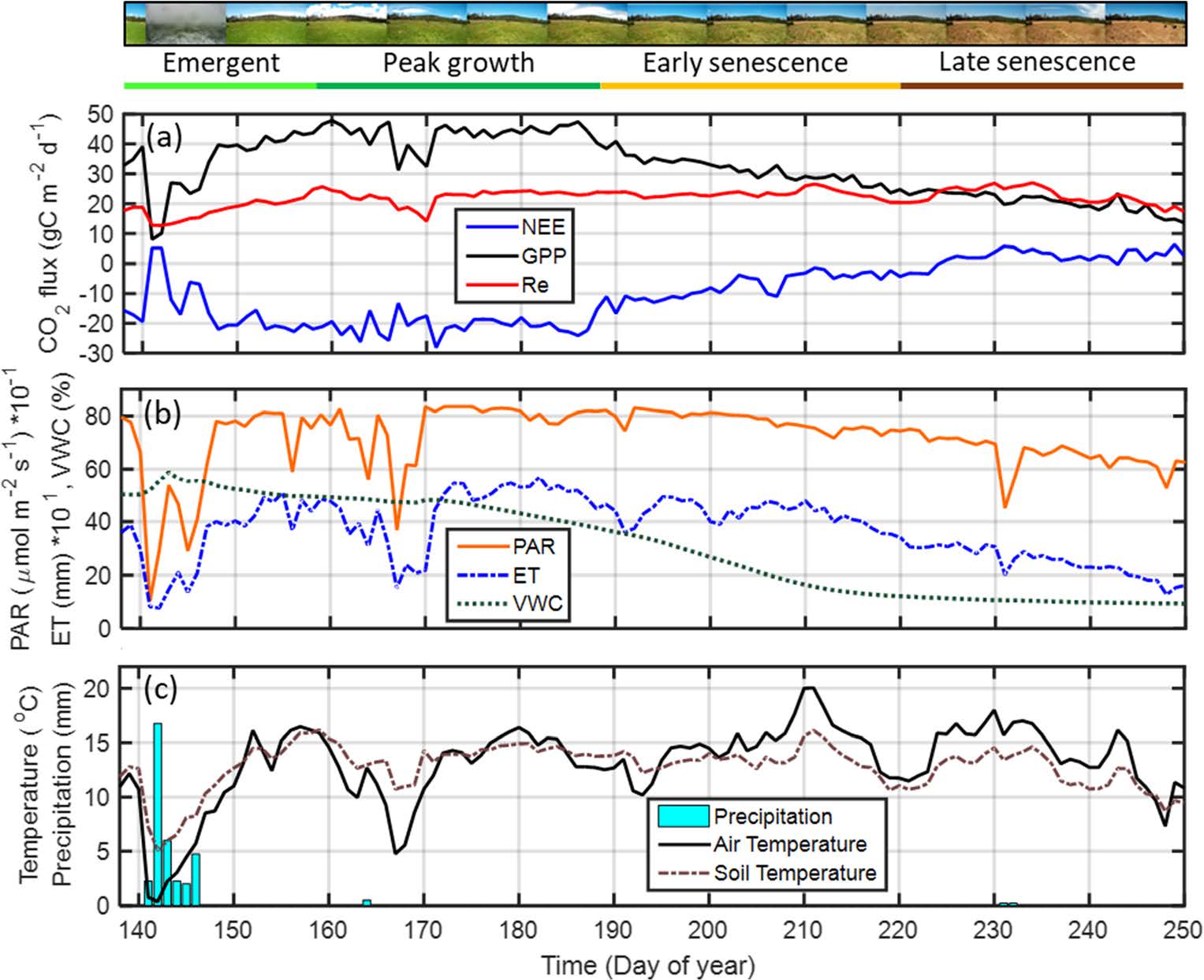Carbon and water exchanges in a mountain meadow ecosystem, Sierra Nevada, California

Blackburn DA, Oliphant AJ, Davis JD. Carbon and Water Exchanges in a Mountain Meadow Ecosystem, Sierra Nevada, California. Wetlands. 2021 Mar;41(3):1-7.
Ecosystem-atmosphere exchanges of carbon dioxide (CO2) and water vapor were investigated in a moist mountain meadow (Loney Meadow) at 1822 m MSL in the Sierra Nevada, California, USA. An eddy covariance (EC) tower was deployed for most of the snow-free period from May to September 2016. The meadow ecosystem progressed from a strong sink of CO2 in the peak of the growing season under saturated to wet soil conditions (−18.51 gCm-2 d-1) to a weak source (2.97 gC m-2 d-1) following a rapid decline in soil moisture as runoff decreased. The variability of Net Ecosystem Exchange (NEE) over diurnal, synoptic and seasonal timescales was dominated by Gross Primary Production (GPP) which ranged from 43 gCm-2 d-1 during the peak of the growing season to 19 gC m-2 d-1 during senescence. Ecosystem respiration was small in magnitude and variability compared to GPP. Approximations of annual NEE for the meadow ranged from -285 to -450 gC m-2 d-1, which is high compared to grasslands, and more similar to mature wetland or forest ecosystems. At diurnal and synoptic scales, CO2 flux was driven most strongly by photosynthetically active radiation (PAR), while seasonally, the ecosystem was linked closely to changes in soil moisture. Light-use and water-use efficiencies of the meadow ecosystem were high compared with those found in most other ecosystems using comparable observations. These results suggest meadows have the potential to be large sinks of atmospheric CO2 and that their ability to do so is sensitive to water table height. This is important for understanding the future of carbon sequestration in mountain meadows in the context of changing hydroclimates and different land management decisions that impact meadow hydrology.